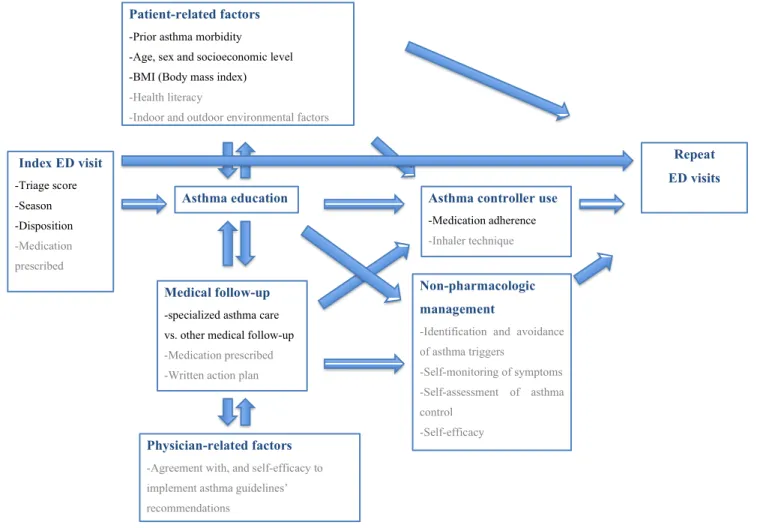Impact of asthma education and/or specialized asthma care on subsequent morbidity in asthmatic children
Texte intégral
Figure




Outline
Documents relatifs
7 Gonzalez-Barcala et al 8 reported that after adjusting for sex, body mass index, having pets in the house, mater- nal education, parental asthma, and parental smok- ing,
Question Many parents of children with asthma are becoming increasingly reluctant to add milk to their children’s diet because they believe it will worsen their children’s
Validity and reliability of an adapted Arabic translation of the Paediatric Asthma Quality of Life Questionnaire (PAQLQ-A) among Egyptians was assessed in a cohort of 103
The three studies that evaluated it (9,10,13) found risk of death with COVID-19 was lower in people with allergic asthma compared to non-allergic asthma; the association
Total IgE, skin prick test positivity (SPT+), eosinophil counts and FEV 1 were assessed in 299 asthmatic cases (children and adults) recruited in chest clinics and 309 non asthmatic
The AIRMAG survey provided prevalence rates for paediatric asthma in a general population sample of children aged under sixteen years, as well as information on the impact of burden
To this end, we have implemented a large general population survey (AIRMAG) of the prevalence, burden, management and control of asthma in the three countries of the Maghreb using
This real-world study shows that stratifying difficult asthma by sex and age of asthma-onset identifies clinically important phenotypes that are currently poorly





